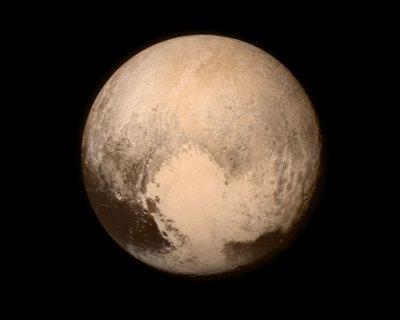U.S. probes reach throughout solar system

Throughout the last 25 years, the space agency’s telescopes and probes have returned close-ups of Saturn, details about the moons of Jupiter and the storms of Mars. As a result, “the United States has been the first nation to reach every planet from Mercury to Neptune with a space probe,” according to NASA. With this visit to Pluto, the country completes “the initial reconnaissance of the solar system."
The New Horizons probe zeroed in on Pluto, snapping images, absorbing data and making history on July 14.
The probe, the first space mission to explore a world so far from Earth, was approximately 7,750 miles above the surface -- roughly the distance from New York to Mumbai, India, according to NASA.
While everyone knew that such a journey – 3 billion miles – would be a technical feat, NASA put its high-stakes mission into context:
- New Horizons is the fastest spacecraft ever launched.
It zooms through space at more than 30,000 mph. But all that speed has a downside, according to NASA: “A collision with a particle as small as a grain of rice could incapacitate the spacecraft.”
- Despite the odds against its success, the probe actually arrived one minute early.
To accomplish this, the spacecraft remained within “a 36-by-57 mile (60-by-90 kilometer) window in space,” NASA stated, “the equivalent of a commercial airliner arriving no more off target than the width of a tennis ball.”
- The New Horizons mission is all about delayed gratification.
Yes, it is great to get those shareable images of Pluto and Charon. But it will take 16 months to send a decade’s worth of data back to Earth, according to the space agency.
News releases from NASA were used in compiling this report.
Related:
Spacecraft already offering insights about Pluto
Spacecraft to offer up-close look at Pluto
If you would like to comment, contact StudyHall.Rocks or like us on Facebook and tell us what you think.

